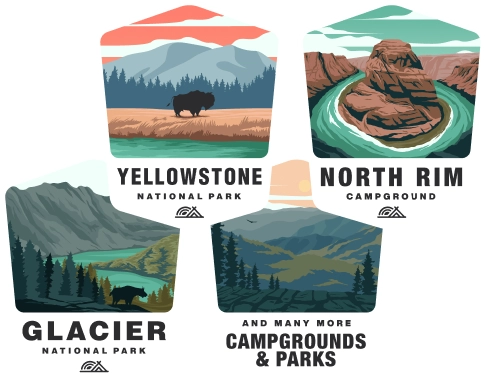Camping at Henry W Coe State Park
Basic Overview
Henry W. Coe State Park is a state park located in Northern California, in the Diablo Range. It is the largest state park in northern California and is known for its rugged hills, open country, and variety of wildlife. The park offers a true wilderness experience, and it's popular for hiking, mountain biking, horseback riding, and backpacking.
Location and How to Get There
The park's main entrance, the Coe Headquarters, is located at the end of East Dunne Avenue in Morgan Hill. From U.S. Highway 101, take the East Dunne Avenue exit and follow the road east. The headquarters is about 13 miles from the highway.
Camping Information
Reservations:
- Reservations for campground sites can be made through ReserveCalifornia.
- Backcountry sites do not typically require reservations, but some limitations apply, and you need to check-in at park headquarters or self-register at the entrances.
Campsites:
- There are a variety of campsites including drive-in and walk-in sites for tents, as well as sites accessible to trailers and RVs (with size limitations).
- Each site typically includes a picnic table, fire ring, and a food locker.
Backcountry Wilderness Camping:
- For those looking for a more remote experience, the park has many backcountry sites that are accessible only by foot or horse.
- A wilderness permit is required, and you will need to follow Leave No Trace principles to preserve the natural environment.
Fees and Regulations
- Daily vehicle entrance fees are charged per vehicle.
- There are separate fees for overnight camping in a designated campsite or in the wilderness.
- Fire regulations vary depending on conditions but expect limitations especially during fire season. Sometimes fires or camp stoves may be prohibited.
Things to Do
- Hiking: There are over 250 miles of trails of varying difficulties.
- Biking: Many trails are available for mountain biking; however, some are quite steep and challenging.
- Horseback Riding: Equestrians can explore most trails in the park.
- Fishing: Some ponds and creeks in the park support bass, catfish, and bluegill.
- Wildlife and Nature Observation: Bird-watching and wildlife photography are popular activities.
- Star Gazing: The park's remote location away from city lights makes it an excellent spot for stargazing.
Weather and Best Time to Visit
- The park experiences a Mediterranean climate. Summers can be hot and dry, while spring and fall have milder temperatures and can be the best times to visit.
- Wintertime can be cold with occasional frost and even snow at higher elevities.
What to Bring
- Water: Bring plenty of water or a way to purify it as sources in the park are few and seasonally dry.
- Map and Compass/GPS: Many trails are not well marked, and navigation can be challenging.
- Layers of Clothing: Temperatures can fluctuate widely between day and night.
- First Aid Kit: Be prepared for minor injuries, as you will be in a remote wilderness area.
- Snake Bite Kit: Rattlesnakes are native to the area, so being prepared is wise.
Wildlife and Plants
- The park is home to a variety of wildlife, including deer, coyotes, mountain lions, and countless bird species.
- The plant life ranges from oak woodlands and dense chaparral to open grasslands and stunning wildflowers during spring.
Safety Considerations
- Always make sure to let someone know your plan before heading into the backcountry.
- Be aware of the wildlife, especially snakes, mountain lions, and ticks.
- Check the weather and park advisories for fire danger and trail closures before you go.
Before planning your trip, always check for the most current information as conditions and regulations may change. The park's official website and visitor centers can provide helpful guidance for a safe and enjoyable camping experience.
